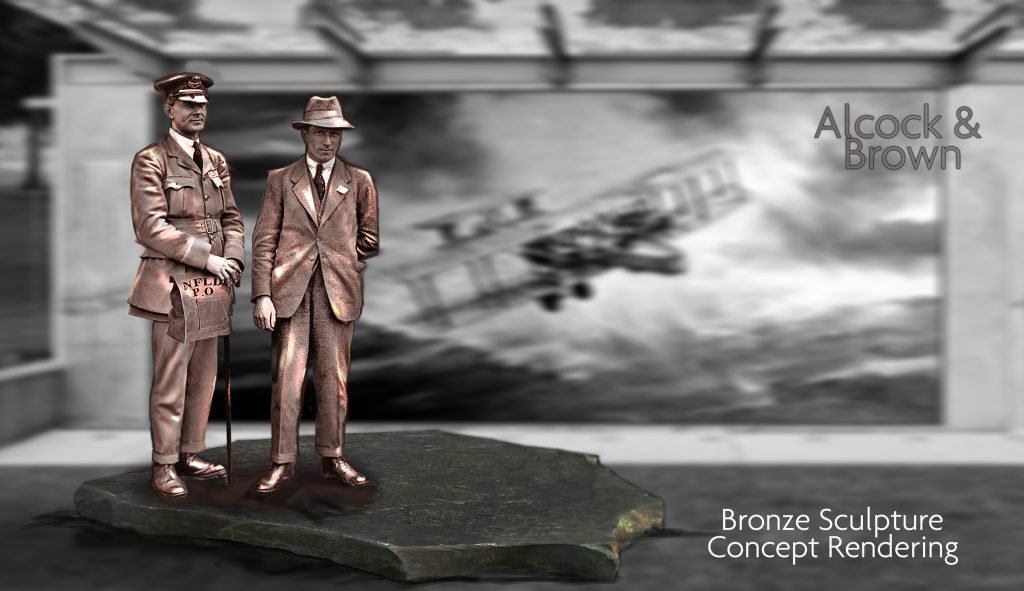Spotlight on Artist Morgan MacDonald & “The Departure” Commemorative Sculpture

A century ago, British aviators John Alcock and Arthur Whitten Brown soared into the history books when they made the first non-stop transatlantic flight. On June 14, 1919, the daring duo departed from Lester’s Field in St. John’s in their Vickers Vimy, landing in a bog in Clifden, Ireland just over 16 hours later - an incredible feat. And thanks to a forthcoming piece from renown local sculpture Morgan MacDonald, this important part of our past will be immortalized in bronze.
The sculpture, named “The Departure,” will depict Alcock and Brown just before they set off on their history-making flight. MacDonald says the piece is based on a famous press photo taken just prior to their journey.
"It is also worthy of note that they are carrying the first piece of transatlantic mail marked NFLD. Shown in the background is a depiction of the Vickers Vimy biplane they successfully flew across the North Atlantic. This component provides an impactful visual to their story and encourages public engagement with a presented photo opportunity,” he states.
Celebrations and events to mark the centennial of Alcock and Brown’s flight (which also marked the beginning of the commercial aviation industry worldwide) took place throughout the summer. Last month, members of Aviation History Newfoundland and Labrador (AHNL) joined corporate funding partners and other guests at the St. John’s International Airport to officially announce the commission and funding of the commemorative sculpture.
"We believe that this sculpture will not only mark an important beginning but serve as an inspiration for future generations to become involved in an industry that is so important to our economic future,” said Bill Mahoney, AHNL Founder and Co-Chair.

The St. John’s International Airport Authority and the Government of Canada is contributing $150,000 and $225,000 respectively towards the piece. Peter Avery, CEO of the St. John’s International Airport Authority, says the sculpture will be temporarily placed in the concourse until the second phase of the airport’s expansion (focusing on the Arrivals Area) is complete.
"It will then be prominently located in the new Arrivals Area whereby arriving passengers will be greeted with a warm welcome while having the opportunity to learn about the history and vital role of Alcock and Brown’s 16-hour flight across the Atlantic,” he added.
"Their accomplishment has had such a profound impact on the development of commercial aviation in our community, our province and the world.”

